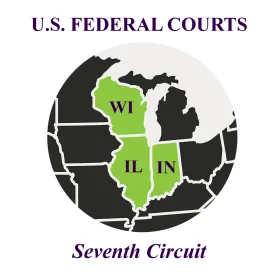On August 6, 2020, an Illinois appellate court ruled that a petition by political activist John Tillman seeking leave to invalidate approximately $16 billion of Illinois’s general obligation bonds (“GO Bonds”) should be permitted to go forward.1 The Fourth District Appellate Court of Illinois reversed an August 2019 order by Judge Jack D. Davis, II,2 who had held that the challenged bonds did not violate a provision of the Illinois Constitution requiring long-term debt to be for a “specific purpose” and who had indicated more broadly that the validity of the bond issuances constituted “a non-justiciable political question.” The appellate court did not engage with Judge Davis’s merits rulings, instead holding that the standard for granting leave to file a taxpayer suit requires only “a reasonable ground for the filing of a suit,” and that the standard was satisfied here because Tillman’s complaint was not “frivolous or malicious” and Tillman’s reading of the Illinois Constitution was “colorable.”
While the trial court’s decision last year had appeared to put an end to any larger trend towards using debt validity challenges as a litigation and investment strategy, the appellate court’s ruling may breathe new life into that trend.
Background
Illinois law permits taxpayers to bring actions to enjoin improper disbursements of public funds, but requires that taxpayers first file a petition seeking leave from a court. See 735 ILCS 5/11-303.
In 2019, Tillman filed such a petition, which attached a proposed complaint that also identified New York-based hedge fund Warlander Asset Management, L.P. (“Warlander”) as a plaintiff. The complaint alleged that Illinois’s 2003 and 2017 GO Bond issuances violated a provision of the Illinois Constitution that requires long-term debt to be for a “specific purpose” (Il. Const. art. IX, § 9), arguing that “specific purposes” include only “specific projects in the nature of capital improvements, including roads, buildings, and bridges.” The complaint further alleged that the 2003 issuance of “Pension Funding Bonds” failed to satisfy this “specific purposes” requirement, because it allocated bond proceeds to be used to reimburse the State’s General Fund for past contributions to the State’s retirement systems. The complaint similarly alleged that the 2017 issuance of “Income Tax Proceed Bonds” failed to satisfy this “specific purposes” requirement, because it allocated bond proceeds to be used to pay past due bills related to general operating expenses.
The Illinois Attorney General opposed the petition on behalf of the government officer defendants, including the Governor, Treasurer, and State Comptroller. In addition, two holders of challenged bonds, Nuveen Asset Management, LLC and AllianceBernstein, L.P., filed an amicus brief in which they alleged that Warlander had an “ulterior purpose” for joining the litigation because it had purchased credit default swaps (“CDS”) that would pay off if the litigation caused Illinois to default on its debt.
Judge Davis held in his August 2019 trial court order that the challenged bonds satisfied the “specific purposes” requirement because the legislation authorizing the bonds “stated with reasonable detail the specific purposes for the issuance of the bonds.” Judge Davis therefore treated the “specific purposes” provision as merely requiring that the legislature identify the purposes for which bond proceeds would be used, rather than requiring that the intended purposes themselves be “specific” (such as capital improvements) as opposed to “general” (such as general operating expenses).
Judge Davis also held broadly that allowing Tillman to file the complaint “would result in an unjustified interference with the application of public funds.” He stated that Tillman was asking the Court “to address a non-justiciable political question and substitute its judgment for the Illinois Legislature some two decades after it occurred,” thereby violating “the separation of powers.” His decision therefore suggested that the validity of the debt might be effectively immune from legal challenge.
Tillman appealed to the Illinois Fourth District Appellate Court. Warlander did not participate in the appeal.
Appeals Court Decision
The appellate court reversed Judge Davis’s order, holding that the trial court erred by denying Tillman’s petition.
Citing the Illinois Supreme Court’s “seminal case” of Strat-O-Seal Manufacturing Co. v. Scott, 190 N.E.2d 312 (1963), the court explained that the purpose of requiring a petition for leave prior to the commencement of a taxpayer suit was to “provide a check upon the indiscriminate filing of such suits.” Absent such a check, taxpayers could bring such suits for “an ulterior or malicious purpose” and thereby “seriously embarrass the proper administration of public affairs.” Under Strat-O-Seal, however, the relevant standard for granting leave is simply “whether the facts alleged in the petition and proposed complaint, taken as true, disclose a reasonable ground for the filing of a suit.”
Applying this standard to Tillman’s petition, the court concluded that “nothing in the record indicates that the proposed complaint was frivolous, filed for a malicious purpose, or is otherwise unjustified.” Specifically, the court concluded that “Tillman’s complaint sets forth a colorable reading of the Illinois Constitution that does not appear to be frivolous on its face.” The court expressed “no opinion on the ultimate merits of Tillman’s claims,” but “concluded that the petition and complaint state reasonable grounds for filing suit.”
The appellate court also held that the trial court had failed to support its finding that Tillman’s suit would result in interference with the application of public funds, especially given that the Attorney General had abandoned on appeal an earlier argument that the mere filing of the suit would cause state officers to default on bond payments. Instead, in the appellate court’s view, “the most likely course of conduct for the State Officers would be to continue making all of the required bond payments until a court ordered otherwise.”
Just as the appellate court declined to opine on the merits of Tillman’s arguments, it likewise declined to address the strength of the Attorney General’s defenses to the complaint, instead emphasizing that “[o]n remand, the State Officers may raise the defenses of the statute of limitations, laches, the failure to join necessary parties, and any other defenses or bases for dismissal they may assert.”
Conclusion
While the Fourth District Appellate Court framed its decision as a straightforward application of the Strat-O-Seal standard, its application of that standard arguably lowered the bar for granting leave to file taxpayer suits, as the court focused specifically on whether the proposed complaint was “frivolous” or “malicious” and on whether the petitioner’s claims were merely “colorable,” rather than placing the burden squarely on the petitioner to establish that reasonable grounds existed for filing the suit. This arguably lowered standard for granting petitions for leave to file taxpayer suits may run counter to the purpose of requiring such petitions, as it may open the floodgates to a large number of future suits challenging the reasonableness of legislative judgments.
This unfolding debt validity challenge will be interesting to observe, because retroactive invalidation of public debt is all but unheard of in modern American history. Now that Tillman’s suit has gained at least some traction, however, it may help to reignite a larger trend towards using debt validity litigation as an investment strategy, including by using CDS to effectively “short” challenged bonds, as Warlander appears to have done. Moreover, the strain placed on state budgets by the COVID-19 pandemic, and the current lack of other debt relief options for states, such as a federal bankruptcy regime, may make courts more receptive to these types of debt validity challenges than they have traditionally been. If Tillman’s suit does prove to be part of a larger trend, that trend could fundamentally reshape the public debt markets, creating unprecedented risks and opportunities for governments and investors alike.
1 Tillman v. Pritzker, Case No. 4-19-0611 (Ill. App. Ct. 4th Dist. Aug. 6, 2020). Of the approximately $16 billion of original issuance amount of the challenged bonds, approximately $14 billion remains outstanding.
2 Tillman v. Pritzker, Case No. 2019-CH-000235 (Cir. Ct. Sangamon Cnty., Ill. Aug. 29, 2019).
Thomas Curtin also contributed to this article.









 />i
/>i

